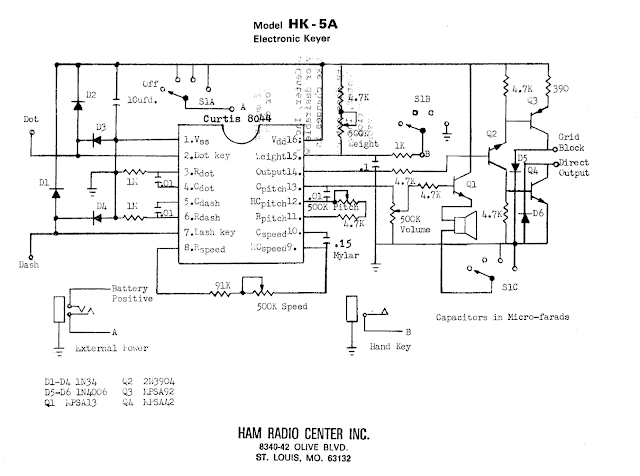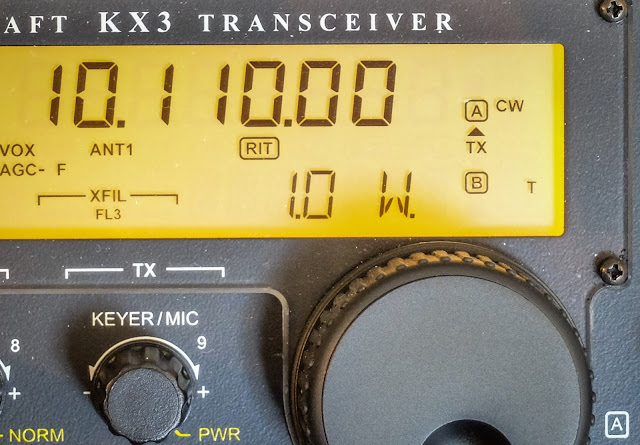Five by Nine... QRP... How can it be?
What does an S-Unit really mean and how can a QRP station sound like a 500w station?
I rarely go up to the phone portion of the bands. Since I started doing QRP and CW last summer I think I've only made two SSB contacts just because my focus has been CW. But last night I was working on a bench project and tuned the Elecraft KX3 up to the phone portion of 40m for some entertainment.
A station in Rhode Island was testing his amp with a new antenna and was getting reports from various stateside operators. There was a lull where no one was answering his CQ so I thought I'd give him a call. He was peaking at S9 on my KX3's meter and he also sent me a signal report of S9 with some 10 over peaks. I then told him I was a QRP station running 10 watts and heard the usual surprised reaction from a QRO station.
I gave him reports as he switched back and forth from running barefoot ~75w to his amp ~500w. With his amp on he was an S9, running barefoot he was S8. So the amp gave him one additional S unit. In terms of hearing him I would have been hard pressed to tell much difference simply by volume. He was perfectly copyable without noise with the amp off.
We also did some tests with my station at reduced power (as if...) At 10w-12w output I received a S9 to S9+10. Reducing output to 5 watts netted me a S8 report and when I reduced to 1 watt (one watt) he was still able to comfortably copy me and I received an S5. So with my station at 1 watt and his running 500 watts we could still converse via SSB. Ladies and Gentlemen you don't need as much output wattage as you think you do.
He was running through a newly constructed homebrewed vertical while I was using my 80m OCF Dipole. We didn't discuss what sort of radial system he had installed, but the difference in antennas was likely the deciding difference in our stations. We were about 500 miles apart and his vertical probably had more low-takeoff gain than my dipole, or possibly more ground loss so I probably had better high angle gain on him for the short 500 mile skip. I think the take-away from this exercise is that the antenna is generally the key rather than transmitter power. If I can get 6 dB of gain from my antenna I have in essence quadrupled my effective radiated power. Quadrupled? Yes, Quadrupled effective output power.
Power and S-Units
You've probably heard it before but it's worth a refresher... Our radio's meter display a measurement in "S-Unit". To move the meter up one S-Unit the receiver must hear 6 more dB (decibels). So one S-Unit is 6 dB.
A decibel is:
- A Power Ratio: dB = 10 Log P2/P1
- A Voltage Ratio: dB = 20 Log V2/V1
You increase 3dB each time you DOUBLE your power
That's worth repeating...
You increase 3dB each time you DOUBLE your power. So to gain one S-Unit you must quadruple your power.
So if you are running 100 watts, to gain one S-Unit using the same antenna system you must increase your power to 400 watts. If you are running QRP SSB (10 watts) that is only 1.5 S-Units down from 100 watts. 100w / 2 (-3dB) = 50w / 2 (another -3dB or 1 S-Unit) = 25w... etc.
We have a great hobby, but there are so many aspects of it that sound like common sense when they really are not... like increase your power.
Increasing power gains you very little compared to a better antenna systems.
That's all for now.
So lower your power and raise your expectations (or your antennas)
72/73 (Note: 72 is a common substitute for 73 among QRPers... as in "not enough power for 73")
Richard, N4PBQ
Antennas offer the cheapest increase in dB
Note the statement above "using the same antenna system". That's the key then isn't it? It's easier to get 6 dB of gain from an antenna than from wattage. A 40m doublet can offer significant directional gain especially when operated on higher bands. Now unless it's rotatable you will be at the mercy of the directionality of its lobes but if you have trees or tall structures you can very cheaply string up a few dipoles oriented in different directions and for far less money that a 500 watt amp (6 dB). If you can only have one wire antenna you may miss out on some DX in the antenna's nulls but you will have some stellar gain in the direction of the lobes. Of course rotatable yagis and beams are the best but now we are talking about real money again. I'm talking bang for the penny. You don't have to buy a wire antenna. Some Dacron rope or weed-eater line and some surplus insulated wire is all you need. You can even make your own feedline cheaply from electric fence wire and insulators.We have a great hobby, but there are so many aspects of it that sound like common sense when they really are not... like increase your power.
Increasing power gains you very little compared to a better antenna systems.
That's all for now.
So lower your power and raise your expectations (or your antennas)
72/73 (Note: 72 is a common substitute for 73 among QRPers... as in "not enough power for 73")
Richard, N4PBQ


































